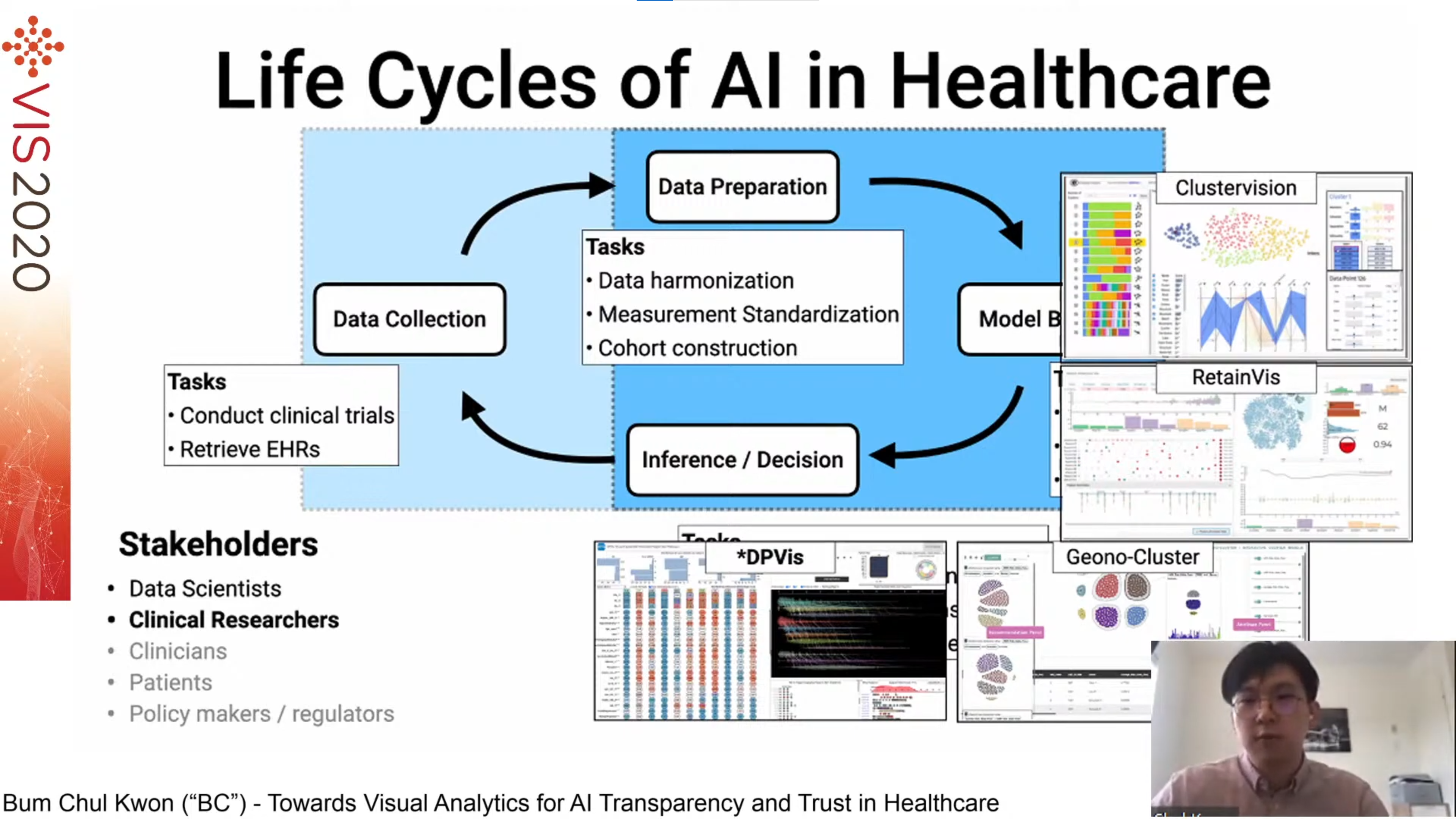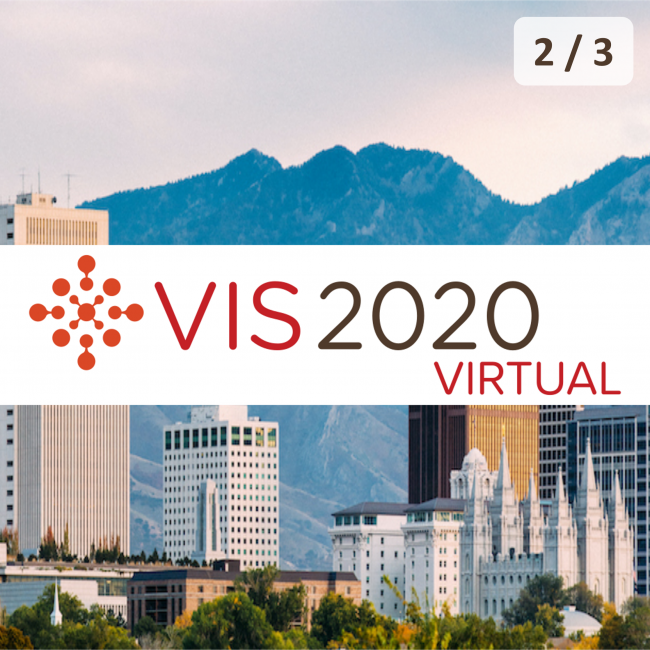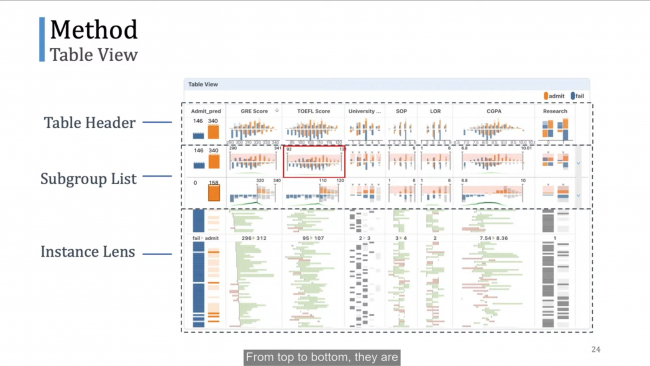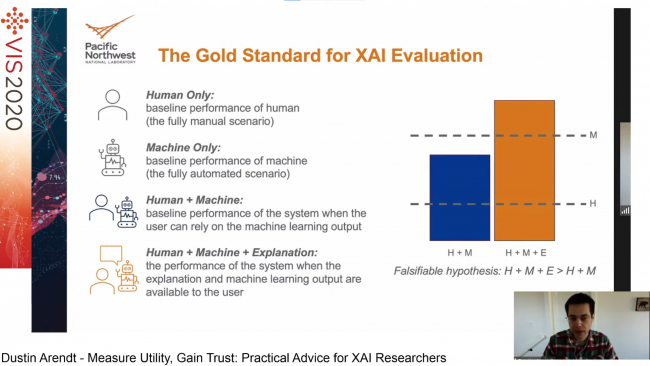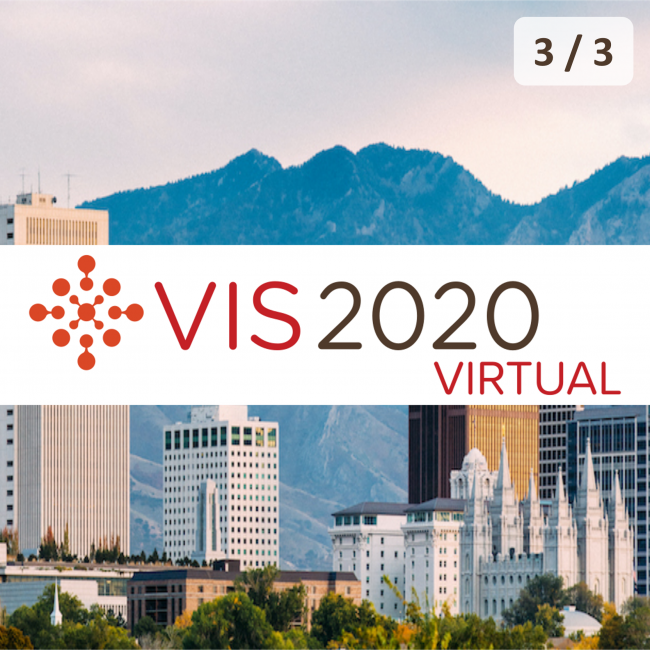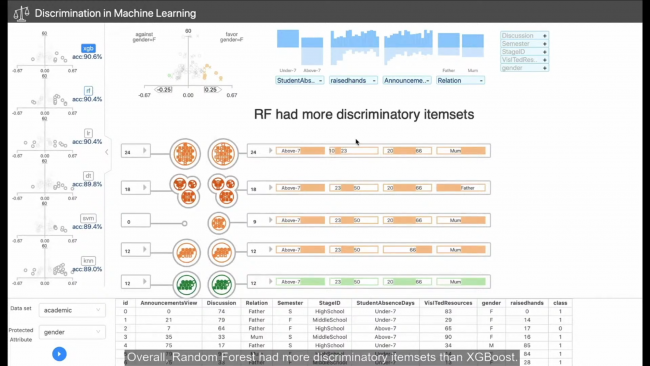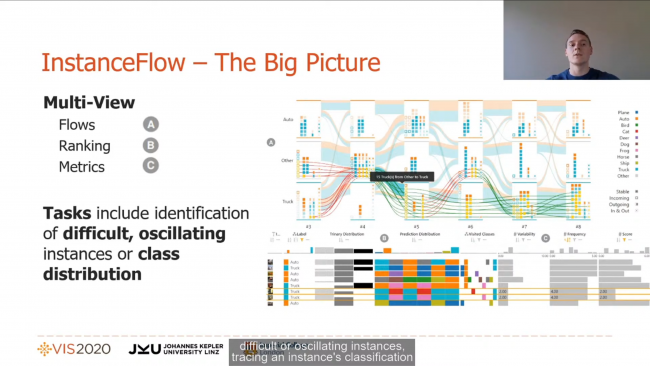This article is part of my highlights of the IEEE VIS 2020 conference. Of course, the talks I selected are those that lie closest to my own research; there were many more interesting presentations. I have provided links to the conference website and the presentations on YouTube, skipping ahead to the actual start.
This overview focuses on healthcare. As one of my current research projects is related to this topic, I found it very inspiring to see the visualisation work that is being done in the medical domain, and to see how researchers in the medical community reach out to the visualisation community.
Recent Challenges in Medical Visualization
Talk 1. Opening by Christina Gillmann. Discussion of many open problems in medical visualisation, including the following two examples:
- Although there is a massive link between healthcare and visual analytics, this connection is underexplored
- While medical data is often used for evaluating machine learning techniques, the question of how to apply these techniques in practice remains.
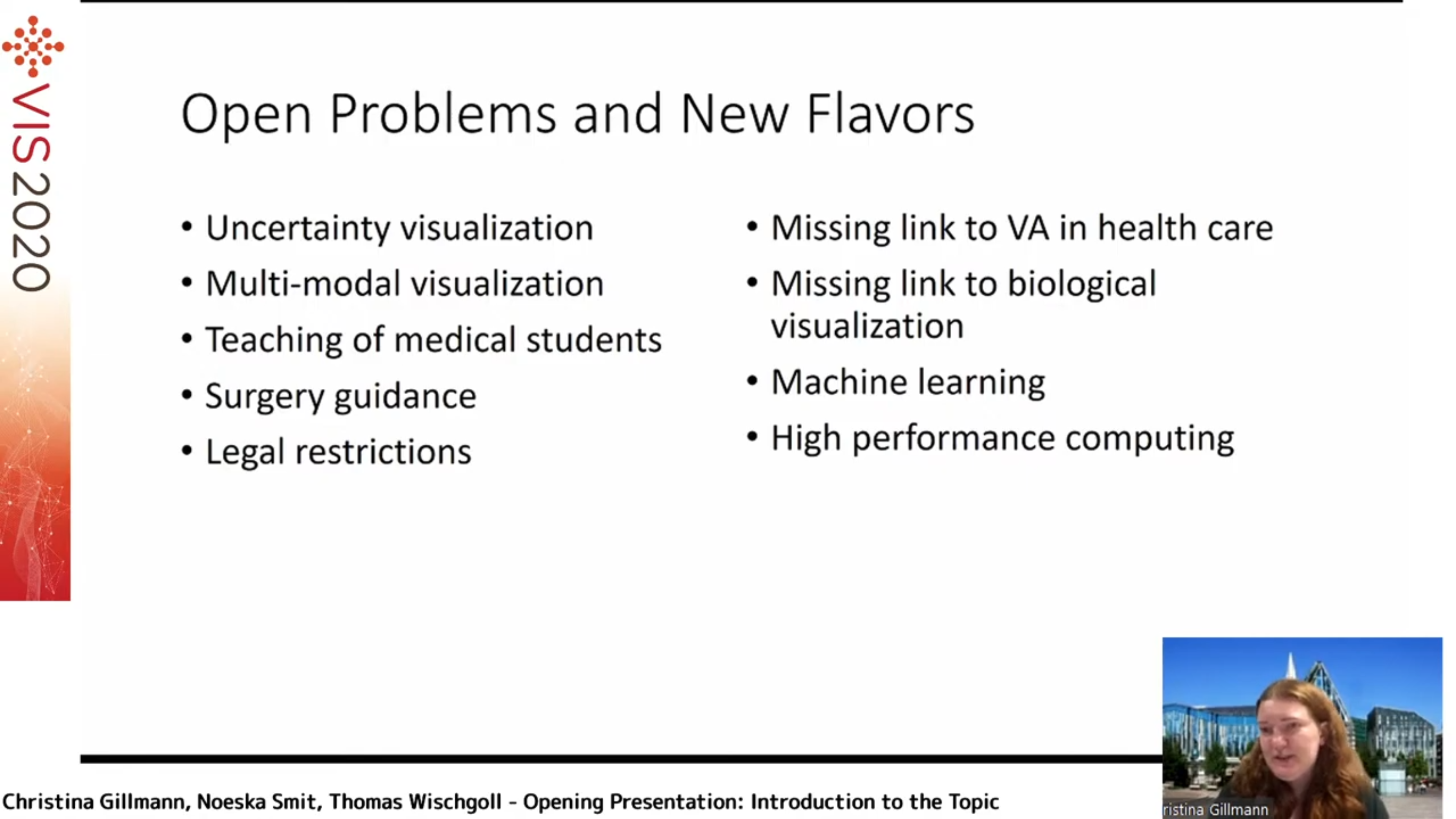
Talk 2. Visualisation for AI in Health by Anna Vilanova. The increasing adoption of big data and deep learning leads to a need for XAI. Visual analytics could help for diagnosis, understanding and refining of models, and guaranteeing qualitative data without biases. Examples of challenges are:
- Ill-defined problems (e.g. what is a good explanation, what does trust mean, etc.)
- Multidisciplinary knowledge is necessary (e.g. AI, visualisation, medicine, HCI, etc.)
- Evaluation is non-trivial (e.g. how does one measure how good an explanation is, what is a success, etc.)
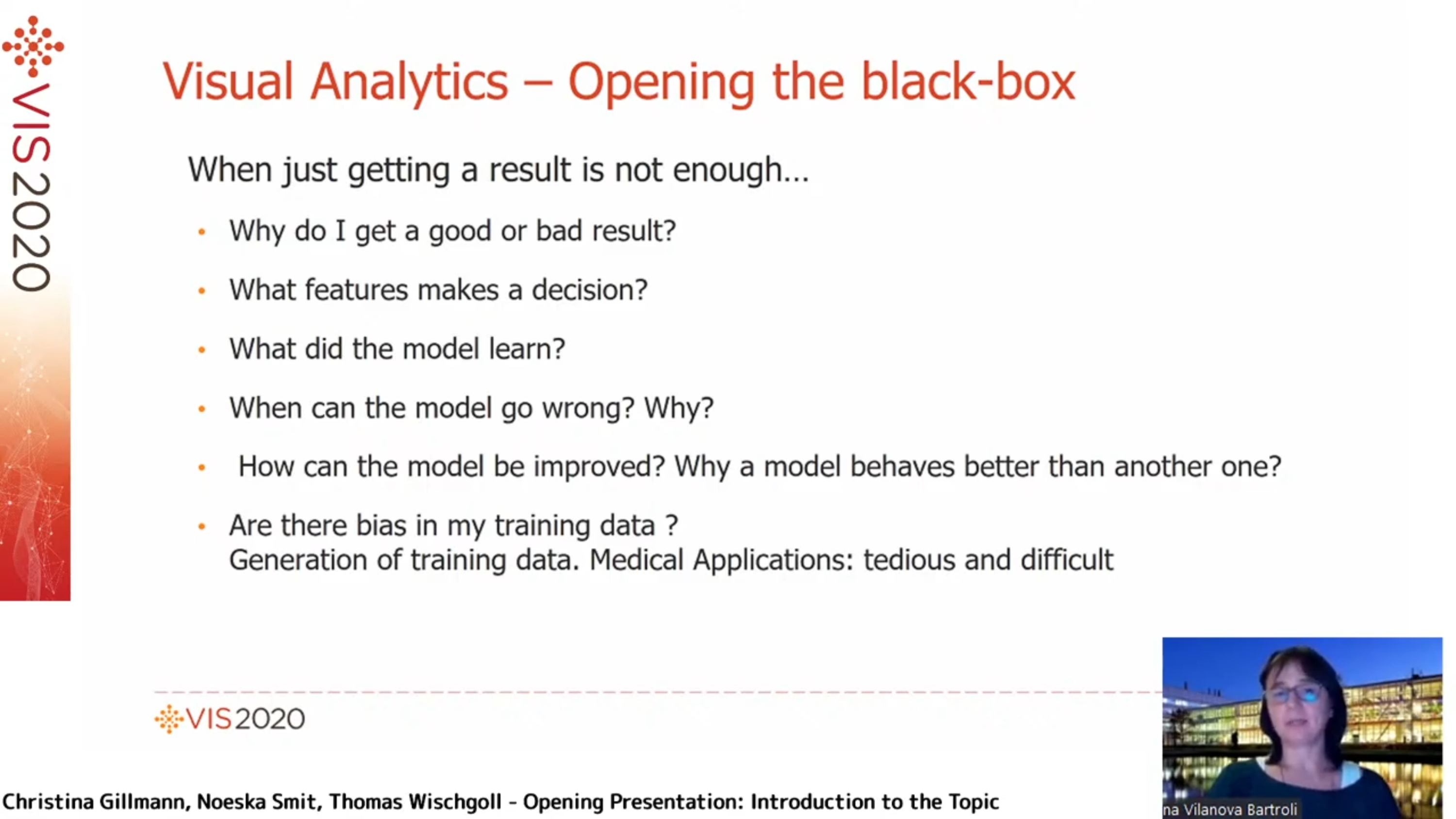
Talk 3. Medicinae Notitia Visibilis Fac - Quo Vadis? by Eduard Gröller. Feedback from 14 health experts about open challenges, requirements, success and failure stories, etc. in medial visualisation. Very interesting to hear the insights and needs of domain experts, and great references to existing literature. Slides were obtained and posted here with permission.
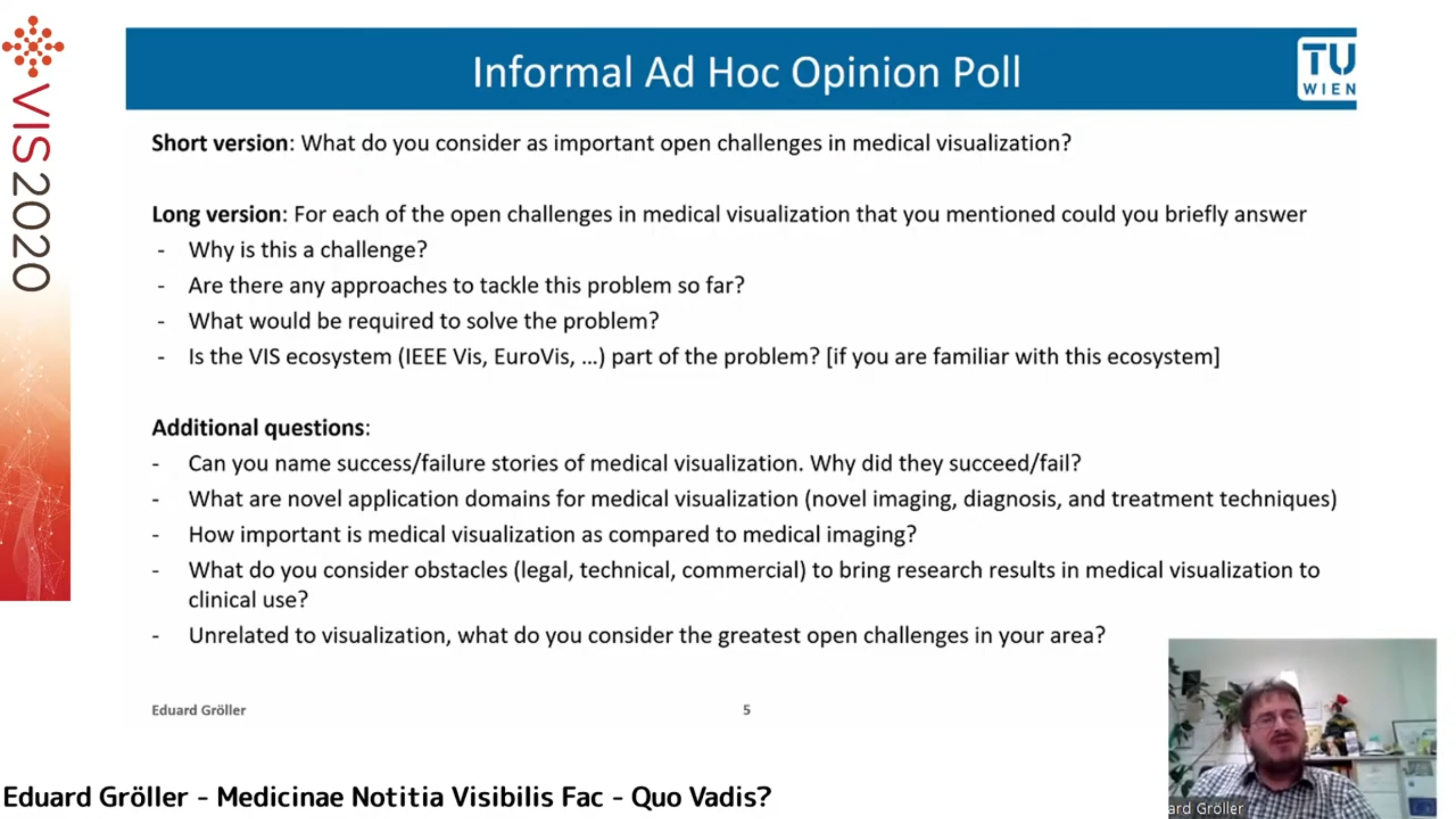
Health & Disease
This session contained great examples of how visual analytics can be applied in a health context. My favourite is Visualization of Human Spine Biomechanics for Spinal Surgery by Pepe Eulzer, in which biomechanics of the human spine are visually explored in 2D and 3D.

TRust and EXpertise in Visual Analytics
While this workshop did not focus on healthcare specifically, it did contain the interesting talk Towards Visual Analytics for AI Transparency and Trust in Healthcare by Bum Chul Kwon. This talk discussed the role of different healthcare stakeholders in the AI lifecycle, which spans data collection, data preparation, model building, and inference/decision. Additionally, some examples showed how visual analytics can help these stakeholders achieve their different goals.
